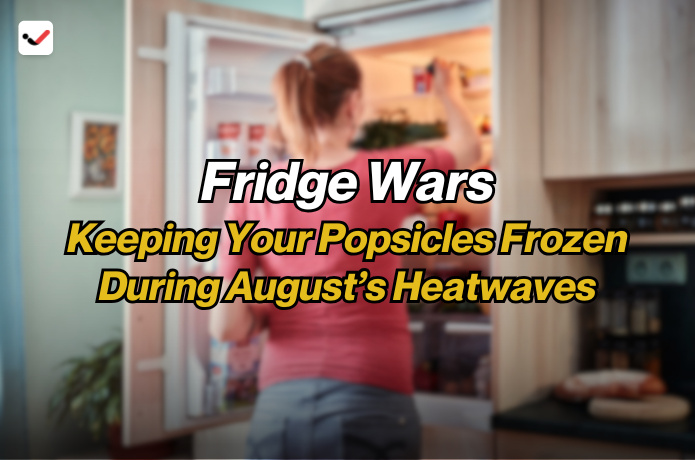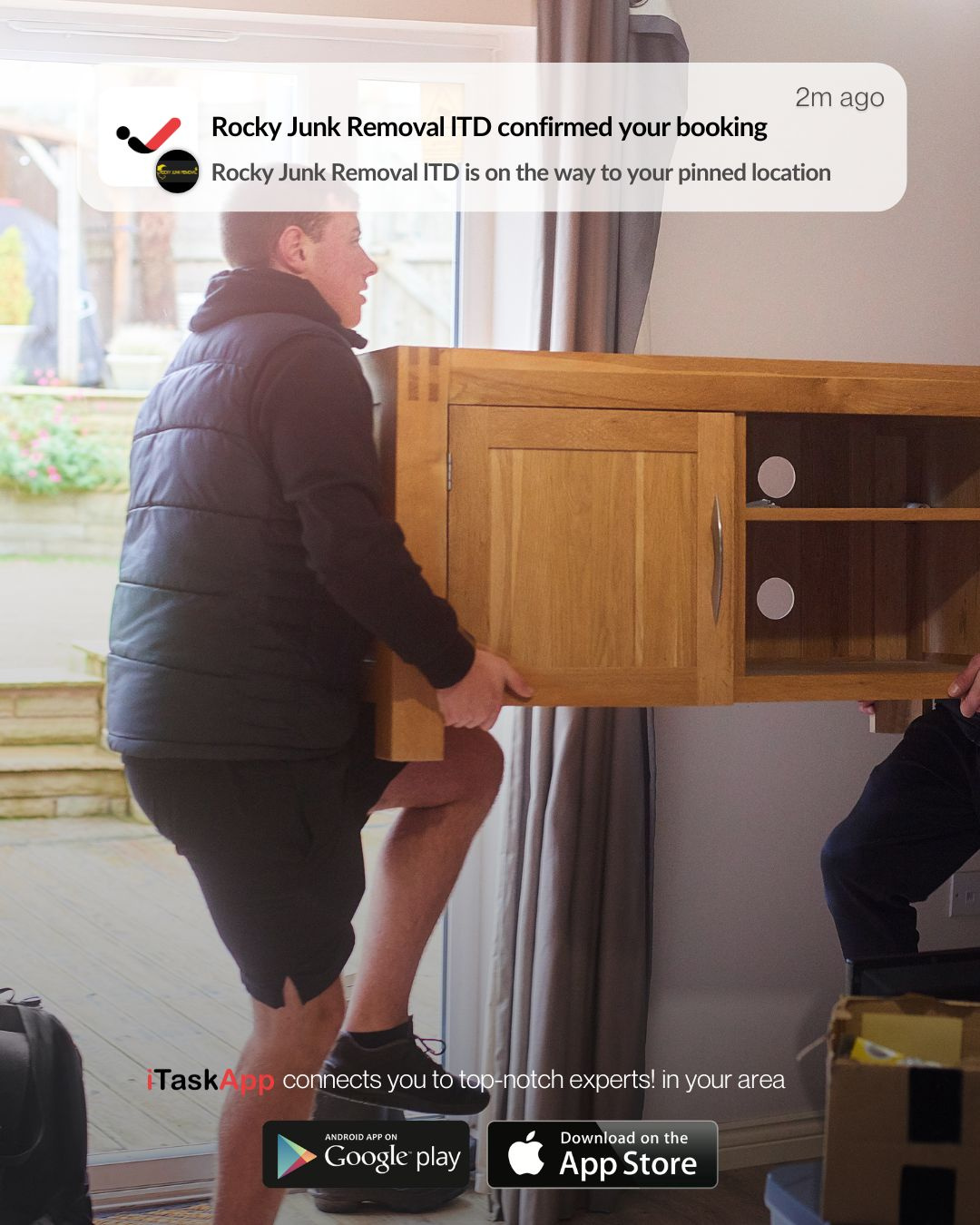Fridge Wars: Keeping Your Popsicles Frozen During August’s Heatwaves
Fridge Wars: Keeping Your Popsicles Frozen During August’s Heatwaves

August can be brutal. Temperatures soar, humidity climbs, and the heat doesn’t let up, even at night. During these heat waves, keeping your home cool becomes a full-time job, and your refrigerator and freezer feel the strain. When it comes to popsicles, ice cream, and other frozen treats, even a slight drop in freezer performance can mean a sticky, melted mess. If you’ve ever opened your freezer to find soft popsicles or half-thawed ice cream during a heatwave, you know how frustrating it can be.
Keeping your frozen food safe in the summer is more than just a matter of convenience—it’s about ensuring food safety and efficiency. Freezers that don’t maintain a cold enough temperature can cost you money and waste energy. In this article, we’ll break down how to keep your popsicles frozen during August’s heat, how to optimize your freezer’s performance, and what tools, tricks, and smart habits can help you win the battle against summer heat.
Why Freezers Struggle in the Summer
During extreme heat, your refrigerator and freezer work overtime. If your kitchen isn’t well-ventilated, the temperature around your appliance rises. This causes your freezer’s compressor to run constantly, trying to keep things cold. Over time, this can wear out the motor, raise your electricity bill, and reduce freezing power.
Hot air entering your fridge or freezer every time you open the door makes the problem worse. The more warm air gets in, the harder it becomes to maintain freezing temperatures. If your freezer isn’t set correctly, your popsicles can start to soften, and bacteria can start growing in other frozen foods.
Set the Right Freezer Temperature
The first and most important step to keeping your popsicles frozen is setting the right temperature. According to experts, your freezer should be set to 0°F (-18°C). This is the safe zone where food stays frozen solid, and frozen treats maintain their shape and taste.
Many people don’t check their settings until there’s a problem. During a heatwave, even a 5-degree rise can make a big difference. Use a freezer thermometer to double-check the actual temperature inside, not just the number on the dial. This small tool can help you spot problems early.
Organize for Better Airflow
A freezer works best when it’s about 70-85% full. This allows cold air to circulate around your items evenly. If it’s overstuffed, air can’t flow freely, and some items (like your popsicles) may not stay as cold. On the flip side, a nearly empty freezer loses cold air faster every time you open the door.
Group similar items together—frozen fruits in one area, ice cream in another, and your popsicles in a consistent, easy-to-access spot. Store popsicles in the coldest part of the freezer, usually toward the back or near the bottom. Keeping the door closed as much as possible also helps reduce temperature swings.
Keep Your Freezer Clean and Sealed
A dirty or frosty freezer can be less efficient. Frost build-up acts like insulation, keeping the cold air from reaching your food. Regularly defrost your freezer if it doesn’t do it automatically. Also, make sure the door seals (gaskets) are clean and tight. If warm air sneaks in around the edges, it can raise the internal temperature without you realizing it.
An easy way to test the seal is to close the freezer door on a dollar bill. If you can pull the bill out easily, the seal may need replacing. A tight seal helps your freezer stay cold during heatwaves and reduces the risk of food spoilage.
Avoid Putting Hot Items Inside
Never place warm or hot food directly into the freezer. This adds heat and forces your appliance to work harder. If you’ve cooked a big meal or brought home hot leftovers, let them cool to room temperature before freezing them. This small habit helps maintain steady internal temperatures and keeps nearby items from softening or thawing.
During heatwaves, your freezer has enough challenges. Avoid adding more by letting food cool down first.
Consider a Backup Cooling System
If you regularly deal with high temperatures in the summer, it might be worth investing in a garage freezer, chest freezer, or a dedicated popsicle freezer. These appliances tend to be more powerful, especially chest freezers, which hold cold air better when opened.
Also, battery-powered or USB mini fans placed near the appliance can improve airflow around your fridge or freezer, especially if they’re placed in hot kitchens or near windows. Some people even use small ice packs or freezer-safe bricks to help maintain cold temperatures inside.
Use Ice Packs and Frozen Water Bottles
If your freezer is underfilled, toss in frozen water bottles or reusable ice packs. They act like cold storage, helping maintain low temperatures when the power blinks or during short outages. They also fill space, improving cold air retention during door openings.
For popsicle lovers, consider storing your pops in a small insulated container within the freezer. Some thermal bags or foam containers can act as an added layer of protection, especially during peak heat hours.
Regular Maintenance Is a Must
Freezer coils, often located at the back or bottom of the appliance, should be cleaned every 6 to 12 months. Dust and dirt can make the unit overheat or slow down. During a summer heatwave, dirty coils can make the difference between frozen popsicles and ruined treats.
Also, make sure your appliance has room to breathe. Keep at least a few inches of space between the back of the freezer and the wall so heat can escape. If your fridge or freezer is crammed into a tight corner, it may struggle to perform in high heat.
When to Upgrade
If your freezer is older than 10 years and struggling to maintain a steady temperature, it might be time to upgrade. New models are more energy-efficient, have better insulation, and cool more effectively. Look for Energy Star certified refrigerators or upright freezers for small spaces if you live in a hot area or use your freezer heavily in the summer.
Modern freezers are designed with better airflow systems, digital temperature controls, and better seals—all important for keeping frozen food safe during summer.
Keeping popsicles frozen during August’s heatwaves isn’t just about comfort—it’s about keeping your appliances running efficiently and your food safe. From setting the right temperature to cleaning the coils and checking seals, small steps can make a big impact.
Heatwaves test everything in your kitchen, and your freezer is no exception. With the right habits, tools, and storage methods, you can keep your popsicles cold, your food safe, and your energy bills under control—even when the temperature outside is through the roof.

